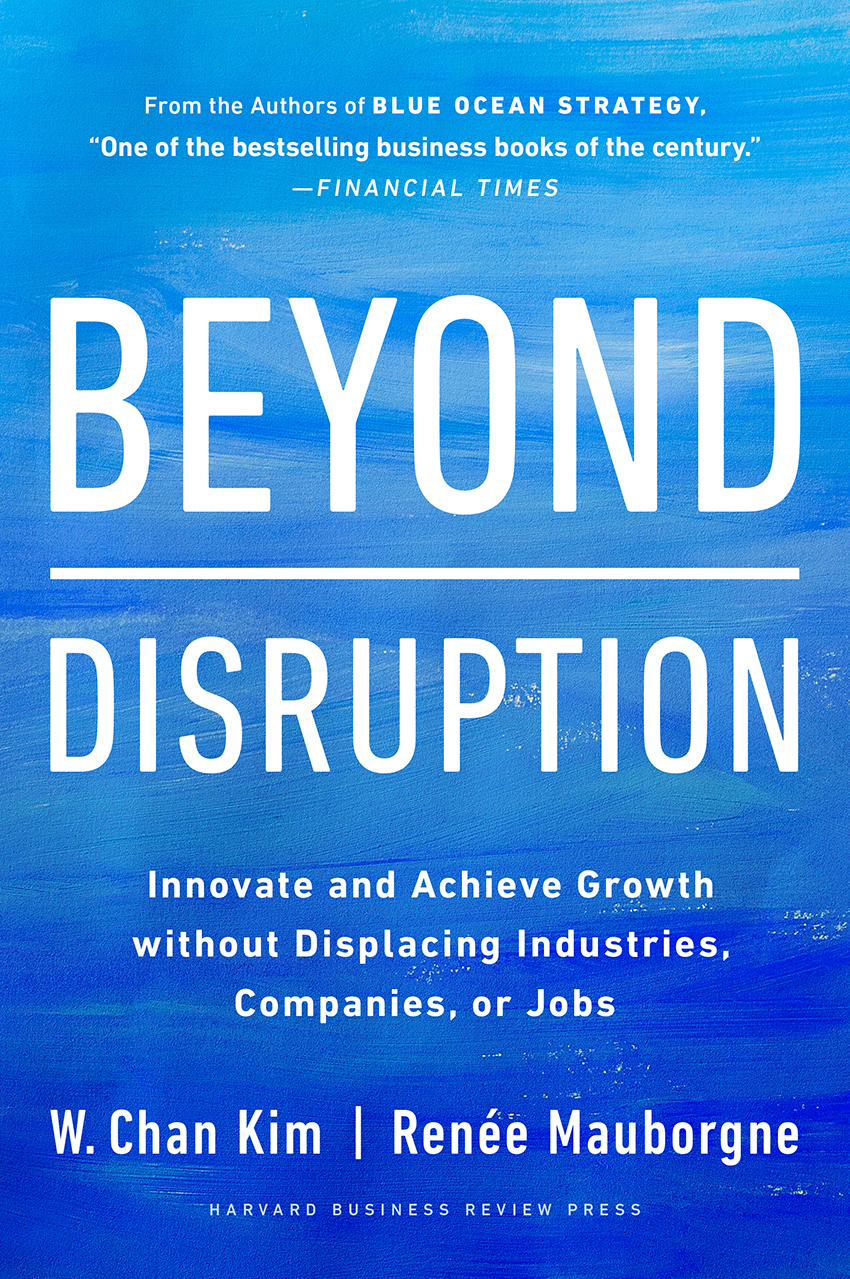By Ray Bert
Beyond Disruption: Innovate and Achieve Growth without Displacing Industries, Companies, or Jobs, by W. Chan Kim and Renée Mauborgne. Boston: Harvard Business Review Press, 2023; 240 pages, $30.
“Disruption” has for many years been both buzzword and legitimate business strategy. Disruptive technologies, service models, and companies — many of them powered by the internet — have drastically changed how we go about many daily tasks, in some cases upending or at least significantly wounding established companies or entire industries. Will this continue to define our future, or are there other ways to innovate?
The book lays out “a path to new industries, new jobs, and profitable growth but without the shuttered companies, hurt communities, or lost jobs of disruption in its wake,” write W. Chan Kim and Renée Mauborgne. “It’s what we call nondisruptive creation that allows us to innovate and grow without disruption or social pain.”
With those words, the authors of Beyond Disruption announce their ambitious vision. And before you make up your mind, consider the sources.
Kim and Mauborgne are longtime collaborators, having previously co-authored the widely praised business books Blue Ocean Strategy and Blue Ocean Shift in 2005 and 2017, respectively, both of which espoused a non-zero-sum approach to strategic thinking. In addition, the two serve as professors at the Institut Européen d'Administration des Affaires(the European Institute of Business Administration), a graduate-only business school with campuses on four different continents, and as co-directors of the school’s Blue Ocean Strategy Institute.
According to the authors, the success of Blue Ocean Strategy (translated into more than 40 languages with a total of more than 4 million copies sold) inspired frequent requests for them to stretch their research further into innovation, to a more explicit search for “positive-sum thinking.”
Beyond Disruption is the result.
In the simplest terms, disruption occurs when a company offers a different, and better, way of providing an existing service or product. For example, Netflix’s original movies-by-mail model disrupted (and all but killed) the Blockbuster model.
Nondisruptive creation, by contrast, solves a heretofore unaddressed problem or need. As a few examples among many spanning decades, the authors cite developments as diverse as microfinance, eyeglasses, and even Sesame Street. None of these disrupted an existing business, yet all of them were profitable and had outsized positive impacts on people’s lives.
Beyond Disruption is divided neatly into halves. The first explains what nondisruptive creation is, why it is so valuable (because creating a new market that doesn’t destroy an old one is, on balance, more beneficial overall), and why conceptually it tends to fly under the radar.

The book’s second half is the tougher task: how to bring about nondisruptive creation. The authors identify several keys to get in the right frame of mind, one of which is to “flip the script.” Don’t start with what already exists and how it can be done better; instead let your mind loose to see unsolved problems or unmet needs and focus there. Square, the now-ubiquitous payment technology for small merchants, did just that.
Subsequent chapters in this section explore how to scout for and identify needs that could lead to nondisruptive creation and finally how to unlock and realize an opportunity once it is found. Much of that last part involves good old-fashioned rigorous thinking, analysis, and hard work: What assumptions prevented others from identifying this opportunity? Are there business implications that held it back, and how can these be done better? How can you use the resources (including your own resourcefulness) at your disposal to make it happen?
Chock full of real-life examples of success stories and written in an aspirational but realistic tone that seems to aim to inspire readers to give themselves permission to think creatively while remaining grounded, Beyond Disruption espouses something akin to a “sustainable development” model for capitalistic innovation. Disruptive business change will never go away, of course. It is natural, often necessary, and certainly inevitable. But a renewed focus on, and celebration of, nondisruptive creation would be a welcome development, helping us get, well, beyond disruption as the only way of thinking about innovation.
This article is published by Civil Engineering Online.



